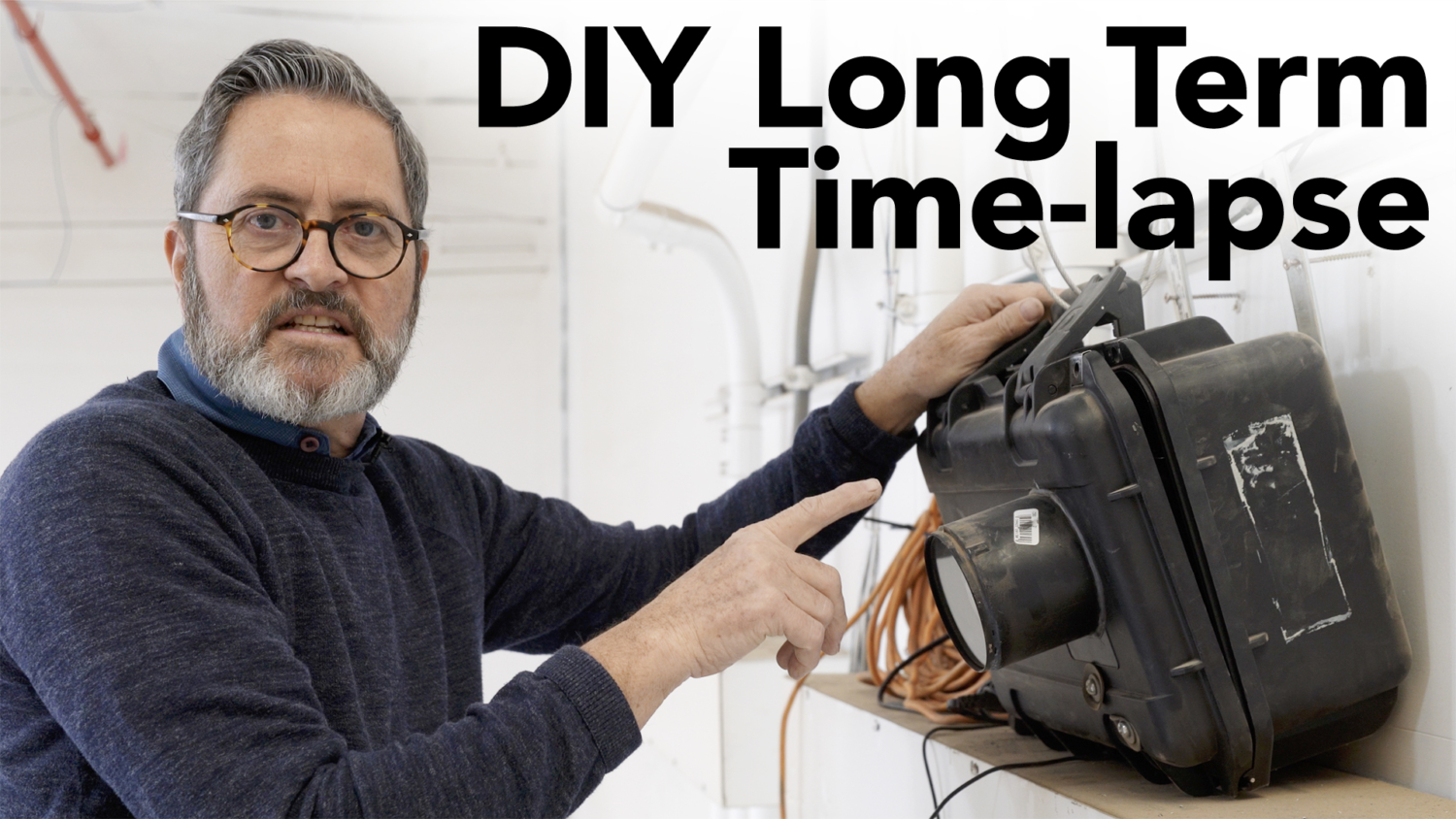Hi, this is Jay P. Morgan. Today on The Slanted Lens we’re going to take a look at how to get great long-term time-lapse. What do I mean by long-term time-lapse? Things that take longer than a couple hours to accomplish. Things that take months or weeks to accomplish like building a building or repainting a car or refurbishing a car. SKB Cases has been my client for years.
They asked me to do time-lapse of this installation of a new machine for them here at the company. So I came up with a couple of solutions to be able to give myself several angles to be able to get that long-term time-lapse.
So this is an SKB case. Basically I took a PVC pipe, I cut a hole in an SKB case, I glued or siliconed that piece of pipe on there and then I glued a filter on the front of it.
I know I’ll have to de-flicker this when I’m done because anytime you use any kind of an automatic mode when you’re doing time-lapse the exposures are not close enough to each other that you get a flicker.
So let’s take a look at some of the time-lapse from this position.
The second option and absolutely the easiest option is some kind of a long-term time-lapse camera. Afidus, and I don’t know if I say that right, but they make a great camera. I think it’s the best one on the market right now that will take and string together the images into a video clip.
The way I set up all these little cameras is with the Platypod. I either have an Ultra or I’ve got the Max. And I just shot them into the beams and things or strap them around a pole.
So I’m going to go into the settings mode. In settings I’m going to just simply find the camera. There’s the camera. I’m going to connect to that in settings with my wi-fi connection. Now I’ll just simply go to the app. In the app I can hit camera.
I have three of these little cameras set up here at different angles. So I’ve got an angle here looking right down the pit. I’ve got a cross angle and I’ve got a reverse angle. I have one a little lower so it’s down below the beams here and all of this mechanism that’s running back and forth. And I’ll just play with that, you know, so I have the option to see which one I like the best. And I can use those and cut those intermittently with each other. This is going on, this time lapse here, is going on for now three months. So it’s been a long process. I’m coming out and changing cameras. I’m getting a lot of footage. I got to boil that down to a three minute time lapse of this whole machine being put together with four different cameras. So it’s kind of involved.
In this setup I’ve got the Afidus camera on a Platypod Ultra. I just strapped it around the pole here. So I can get a shot right down the alley here of all the work they’re doing on the machine. Again that’s a really simple setup there. It’s the Platypod Ultra. We’ve got the Benro head and the strap around the pole that I can move up and down. It worked out really well.
One thing I forgot to talk about is the intervalometer. I put it on a one minute interval that gives you 60 frames per hour.
So I’ve been coming out every two weeks to check on the cameras just to put new cards in the cameras and put new batteries in the Afidus cameras if I needed to. And just make sure everything’s working. I moved them a few times when I had to change the view like when this structure came up for the crane it blocked one of my cameras. So I had to slide it down the pole.
So there you have it, a look at long-term time-lapse. It’s a really fun thing to do. It’s something that’s just nice to set up and be shooting all the time watching the snow pile up, you know watching the house be built, looking at something happen long term. It can even be the flowers coming on as they come up and blossom.
A special thanks to SKB cases for providing the case, providing the factory and just letting us come out here and do a long-term time-lapse. It’s been a lot of fun. So keep those cameras rollin’ keep on clickin’.
I think my SKB case is about to fall out the window.
Yep our Rebel T4-i is absolutely dry and still looking good there. On to the next job.
We’re still recording we’re still good.
So there you have it, the camera’s still rolling and it’s working fine.
Let’s see if our camera’s still rolling. It dropped about 12 feet on to the side. It is still rolling. This thing’s been dropped about eight or ten times now in this case. This camera’s doing great. It still survived. This case might just fall out the back of our van. Sometimes that’s been known to happen.
My SKB case fell out of the back of the truck. Is it still working? Yep, still recording. The camera’s working just fine. So there you go, it fell out of the back of the truck and it’s working just fine!


